HVAC Contractor – Southern Colorado’s Choice
At True North Heating & Cooling we seek to provide the best possible HVAC Contractor services to all properties, including residential homes, apartment complexes, multifamily homes, and commercial office buildings.
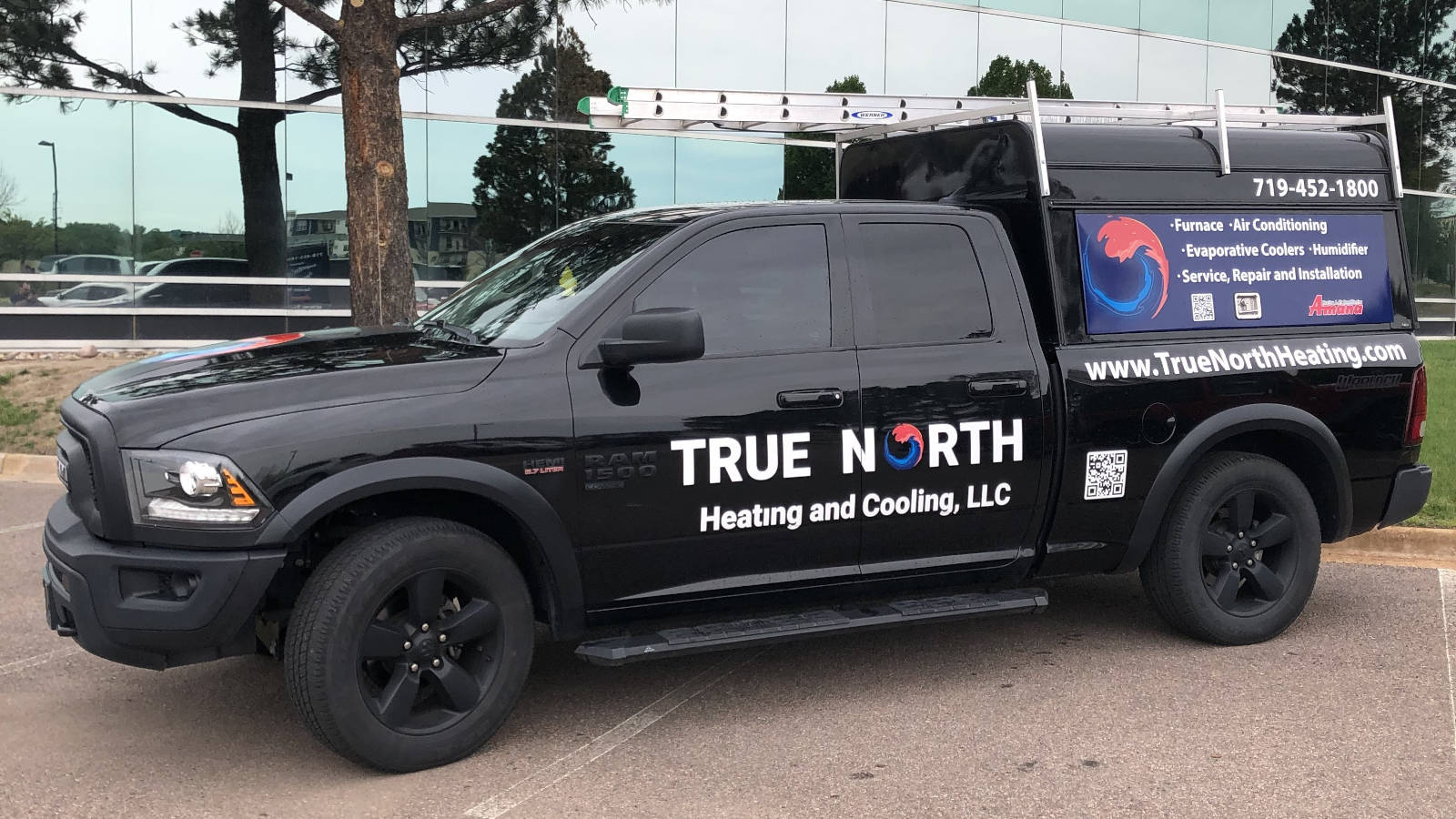
HVAC Contractor: Licensed & Certified
Waiting until the last second to call a reputable HVAC Contractor may prove to be a costly decision.
If you’re having any problems with your heating system, call True North Heating and Cooling
immediately as this could potentially prevent the issue from getting worse.
We offer professional HVAC contractor services without the premium pricing.
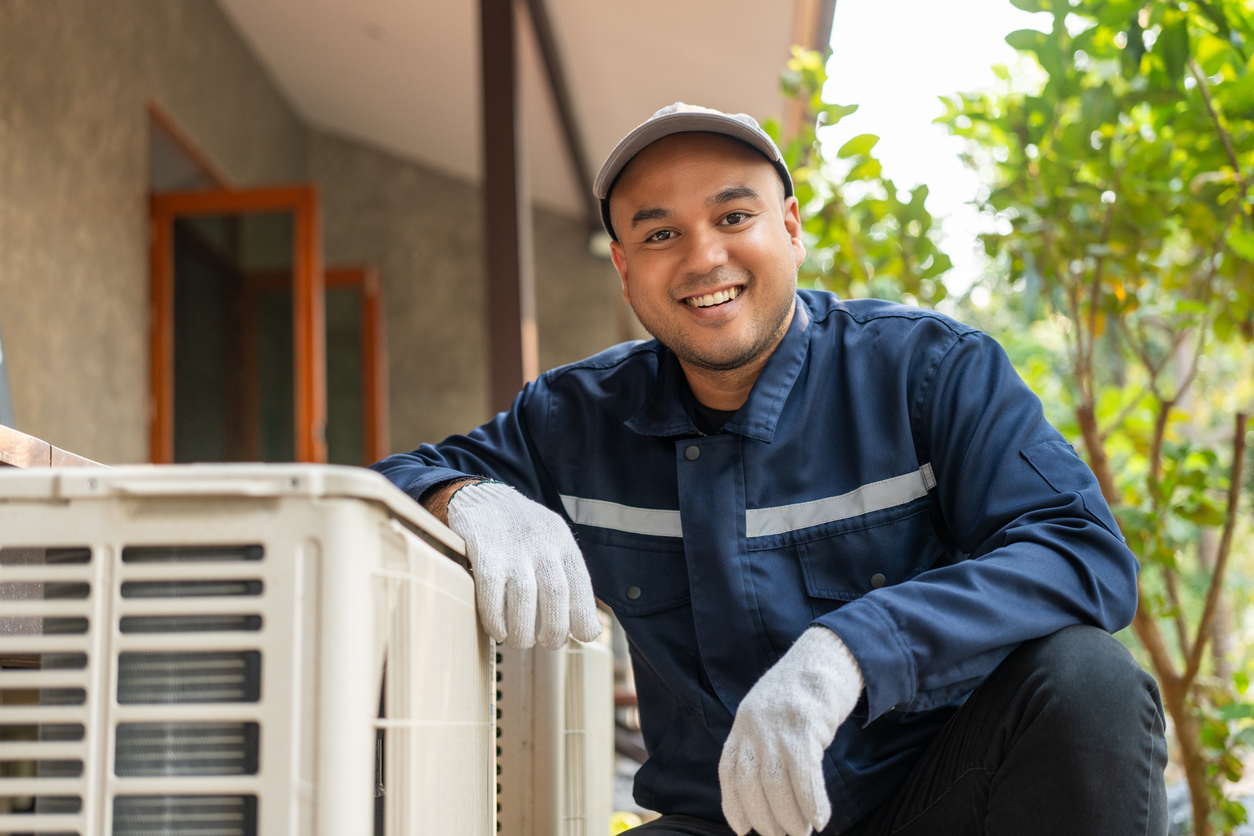
Property Managers
With over two decades of experience, let our team help you by keeping your property’s HVAC systems maintained across the long haul.
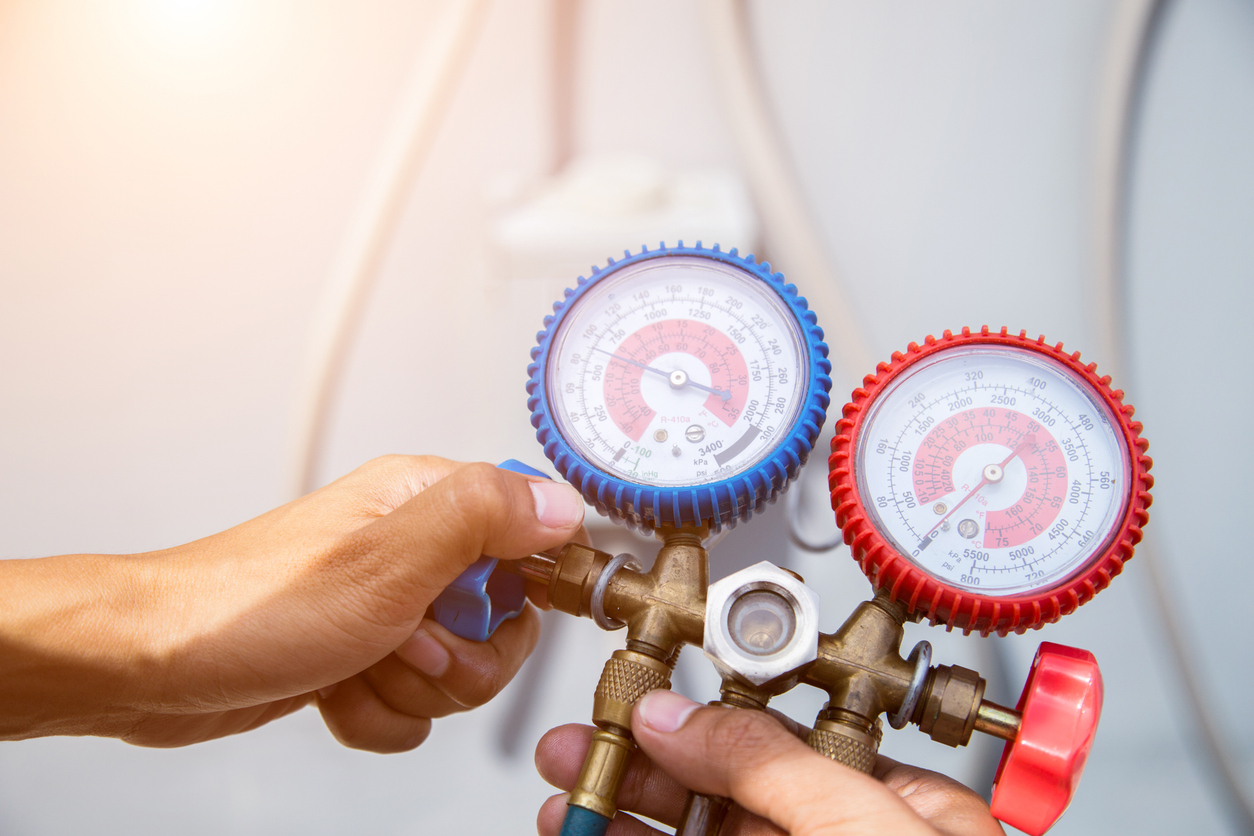
Air Conditioning Repair
Our professionally trained technicians provide AC repair services for all makes and models of AC equipment.
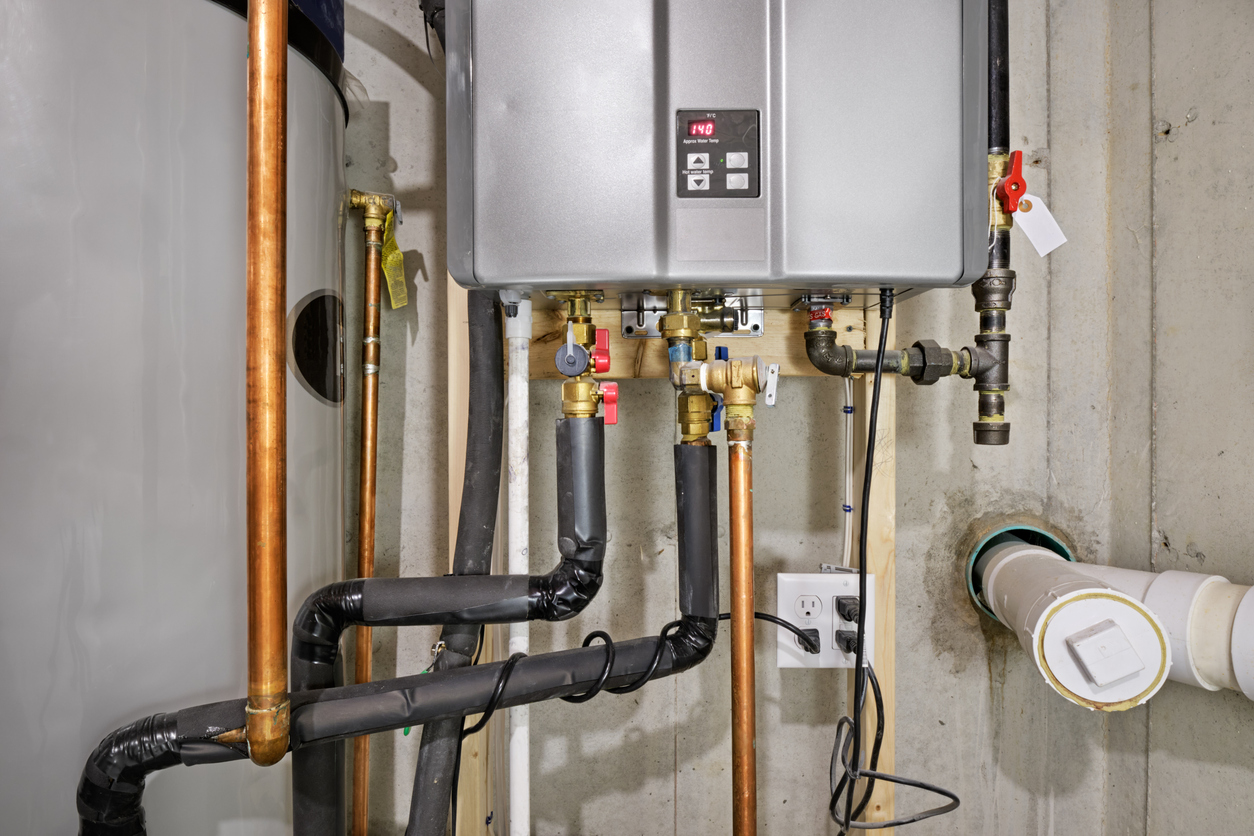
Heaters
True North Heating & Cooling is Southern Colorado’s choice for all your furnace and heater needs.
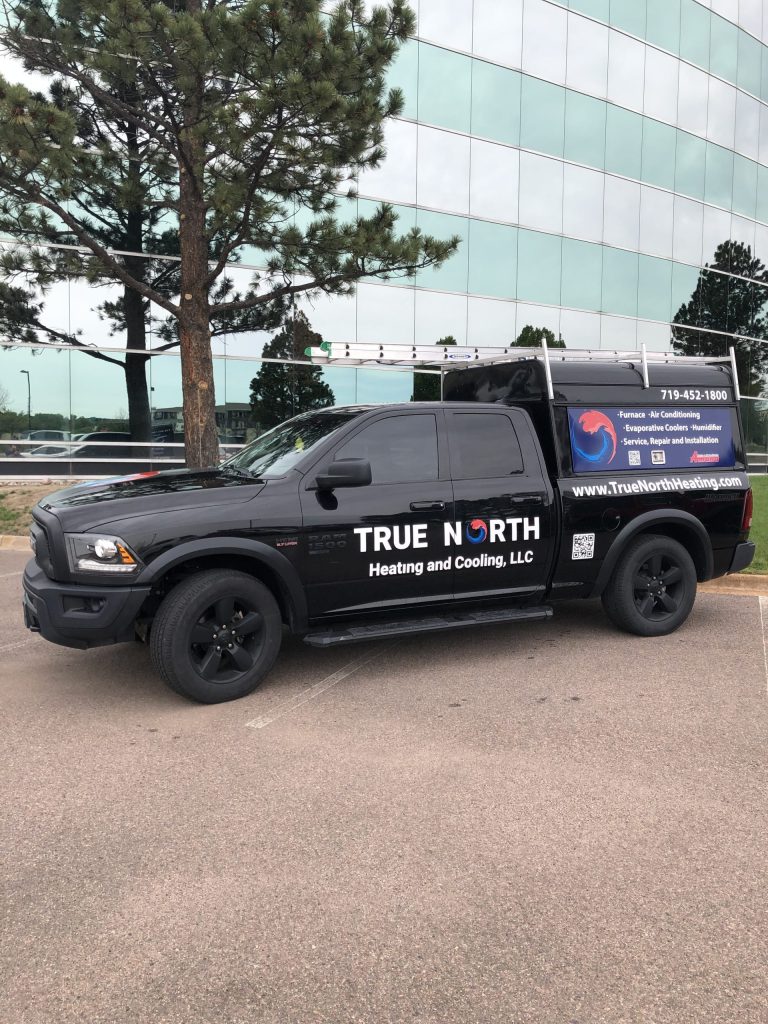
Backed by the True North Guarantee
Our HVAC equipment carries manufacturer warranties that last up to 10 years if you register your unit.
Moreover, we offer a 1 year labor warranty on new equipment installs, and all repair parts are warrantied for 30 days. Learn more about what you can expect from True North Heating & Cooling.
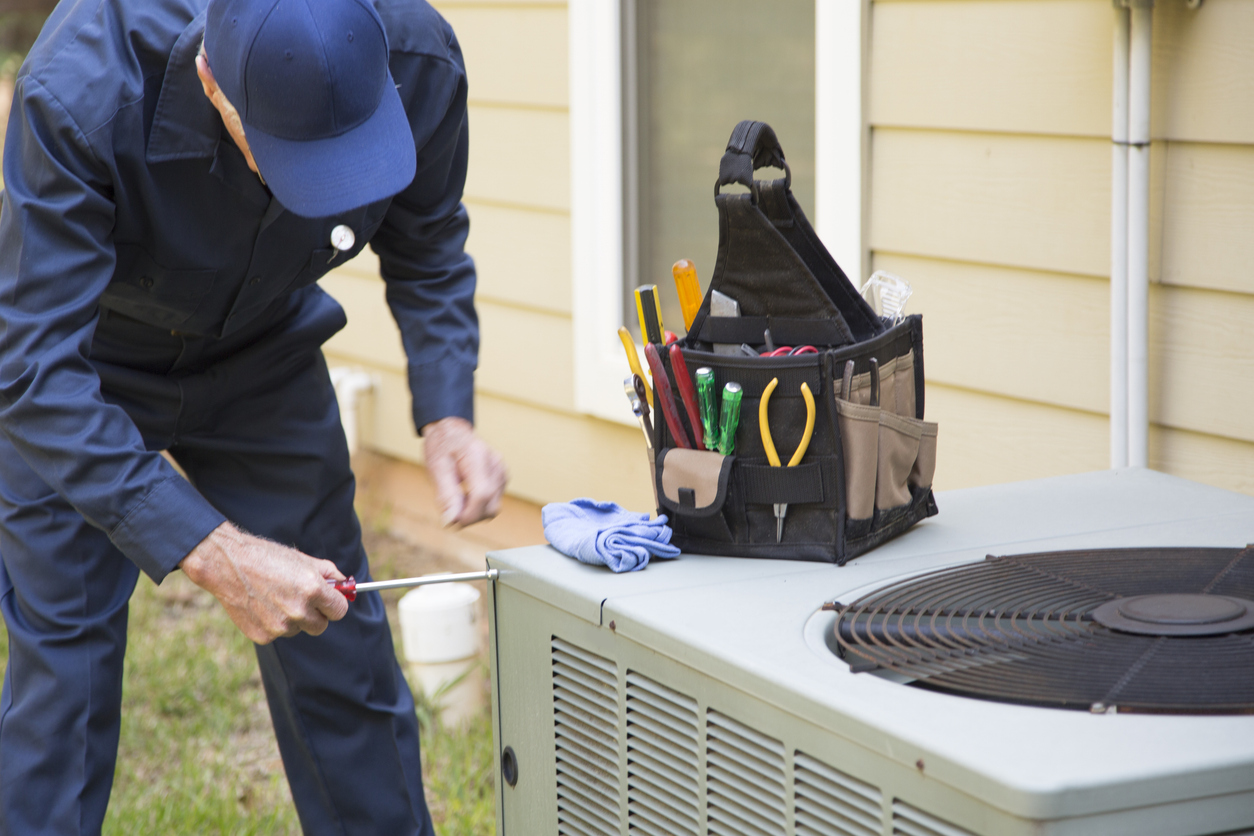
HVAC Repair
Our professionally trained technicians provide HVAC repair services for all makes and models of AC equipment.
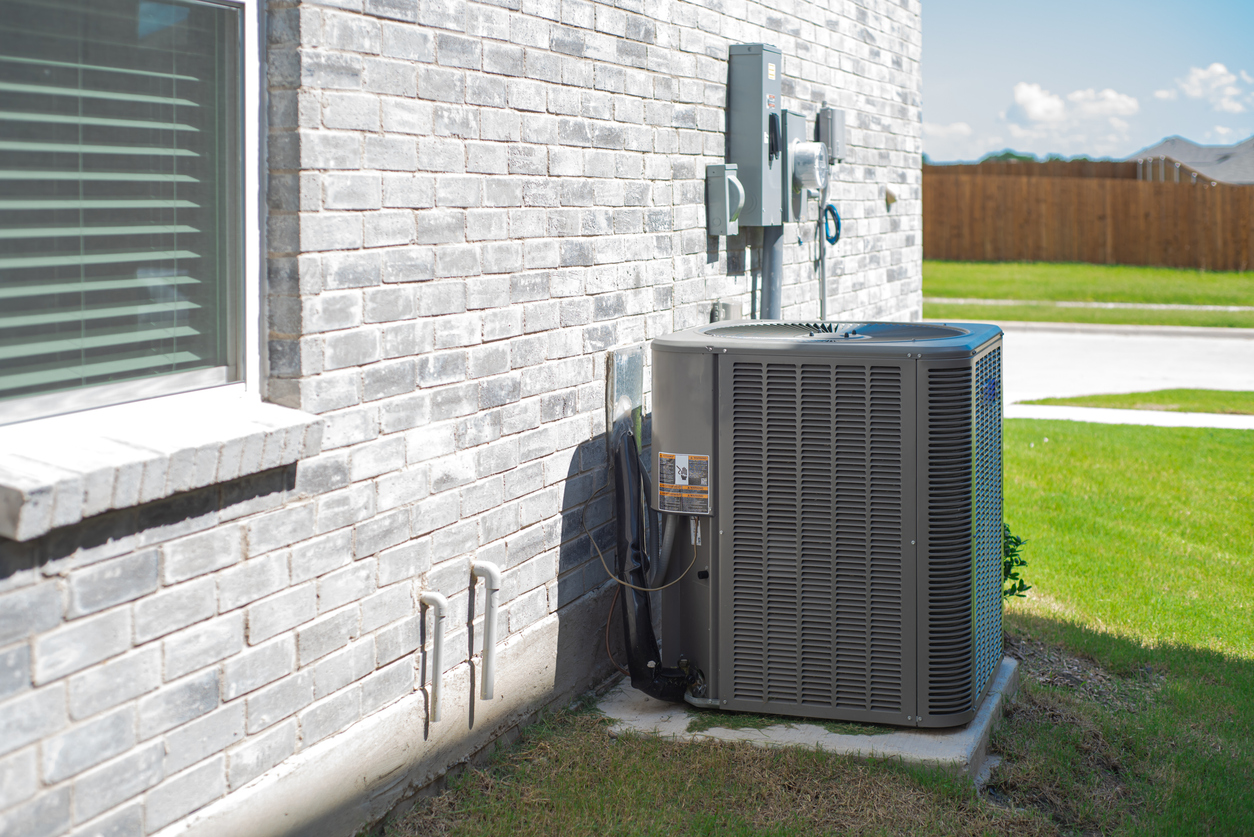
AC Installation
True North Heating & Cooling is a premier air conditioning installation company in Colorado Springs.
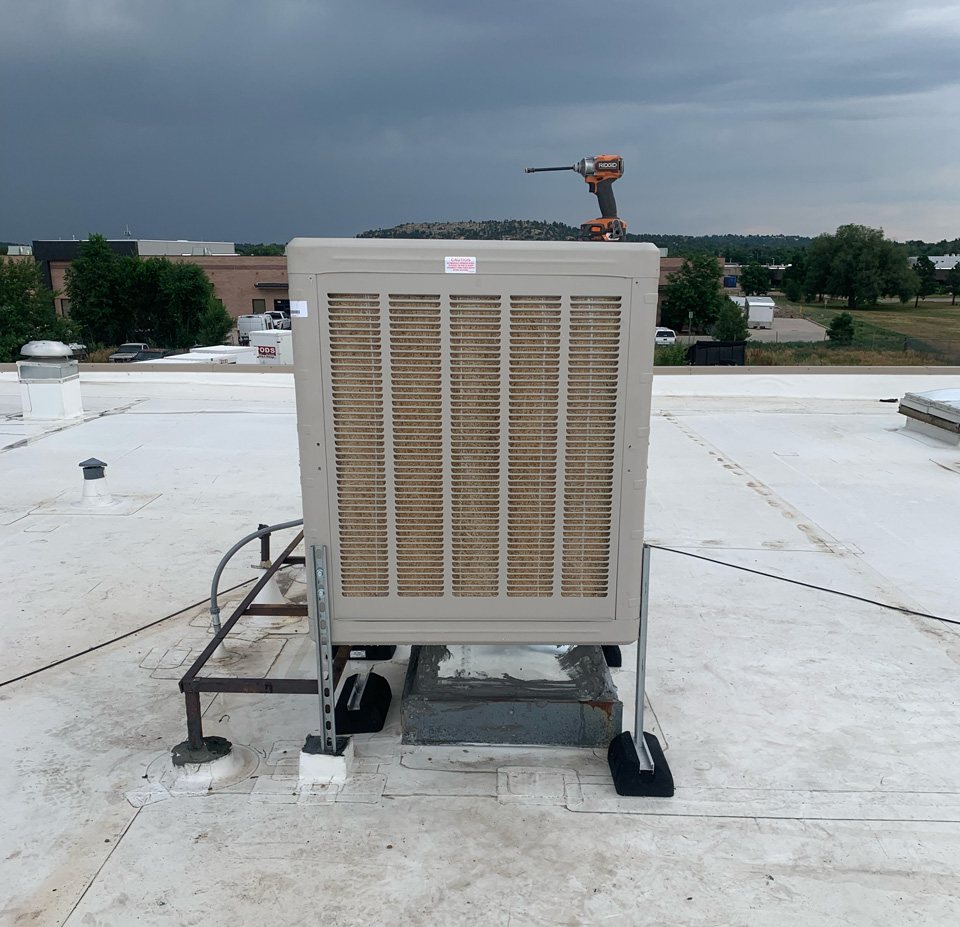
Swamp Cooler
Evaporative cooling was the primary source of inexpensive, cool air temperatures before the invention of ACs.
Your HVAC Contractor
Finding the right HVAC contractor is a Southern Colorado necessity, and with over two decades in the industry, we’ve got the experience to handle all your commercial & residential installation needs.
At True North Heating & Cooling, we know how important comfort is to you.
By treating every home and business like it’s our own, we give each customer the very best in professional HVAC services, including air conditioning repair, heating installation, and other HVAC services.
Moreover, we also handle any swamp cooler or water heater issues as well as offer complete HVAC maintenance or HVAC inspection services across all of Southern Colorado.
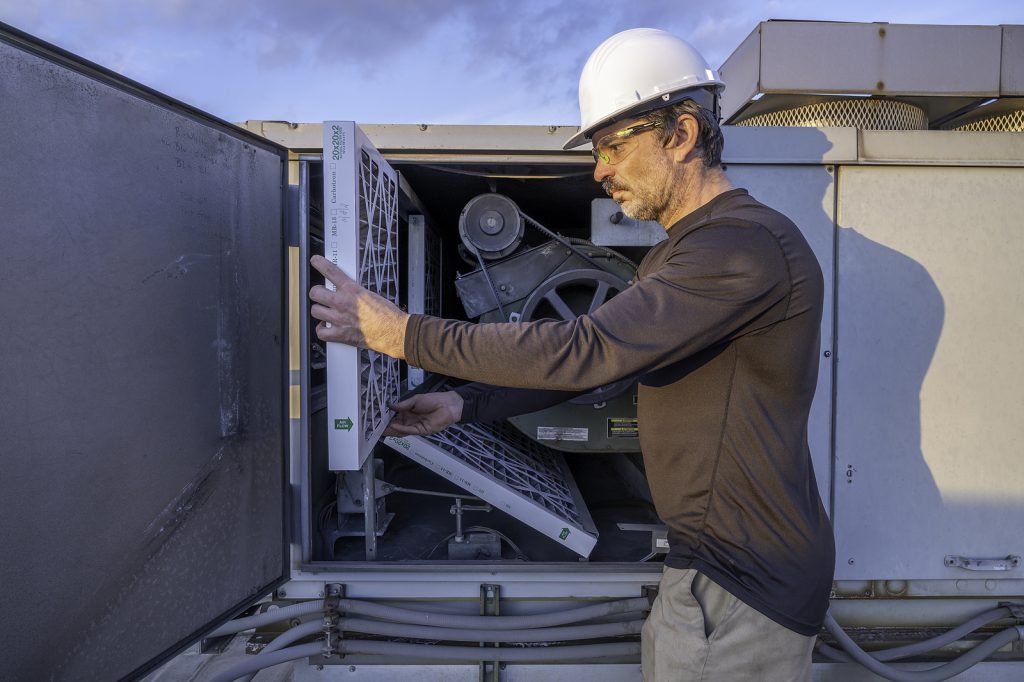
FAQs
Why Choose Us?
I’m Isaac Hackler, owner of True North Heating & Cooling.
I have been a licensed HVAC contractor for over two decades, and carry almost 50 vendor certifications.
My team’s focus on customer service during all phases of your heating or furnace repair has been a central pillar to our success.
Knowing that trust is earned and is a valuable asset to a company, we value our relationships with not only our clients, but with property managers and their clients.
Our goal with property managers is to provide the best possible service in a timely manner to earn that trust that is so essential to having a relationship that is reliable and stable.
We offer the same 24-hour service and response times to our property managers that we offer to all of our clients. We service and repair all makes and models of heating and cooling equipment in both the residential and commercial applications.
We seek to provide the best possible service to all properties including residential homes, apartment complexes, multifamily homes, and commercial office buildings.
Our current clients know that they can call on True North Heating & Cooling to get the services desired at a fair price and in a timely manner.
They know that they can count on our getting the job done right and an honest answer on the exact remedy to the problem at hand.
The True North Guarantee
Our HVAC equipment carry manufacturer warranties that last up to 10 years if you register your unit.
Moreover, we offer a 1 year labor warranty on new equipment installs, and all repair parts are warrantied for 30 days.
AC Installs: 10 Factors to Consider
AC Installation Tips
1. Cost
Many consumers make the error of purchasing the least expensive AC unit available to save costs.
Unfortunately, costlier units prove to be much more cost-effective in the long run.
Therefore, they consume limited amounts of energy, reducing utility costs month-in and month-out.
As a result, choose an ac installation team that understands which unit will be best choice for your needs.
2. Quality
After considering cost, quality comes next when planning an HVAC installation.
Costlier systems are often of higher quality and subsequently last longer and require less air conditioning repair and HVAC maintenance.
You should focus on the specifications of each AC unit, & invest in a higher quality system to ensure you do not have to repair or replace your air conditioner frequently.
And don’t forget, for questions on this or any other air conditioning installation or HVAC installation issue, just send us a message or call now!
3. Size
If your AC is too small, you have to run it continuously, resulting in higher consumption of energy.
Conversely, large AC systems cool air quickly and the on and off cycle is extremely fast.
Therefore, they are not able to dehumidify air effectively.
In addition, make sure that the AC unit has a suitable size and can be easily placed at the desired ac installation location.
4. Efficient Ductwork
Old or inefficient ducts tend to leak up to 20% of cool air in the environment.
You can hire the services of a professional company or an AC technician to resolve problems with ducts.
Before installing an AC system, it is necessary to ensure that your ductwork is in good condition.
Seal the joints so that cool air stays in the room.
5. Energy Consumption
You must check the energy efficiency rating, also known as EER rating, to identify the most cost-effective solution.
The higher the rating, the more energy efficient is the system.
The rating ranges from 8 to 11.5.
Energy efficient AC units are suitable for environment. They do not emit harmful gases or heat in the environment.
Modern systems come equipped with functions such as variable fan speed, sleep settings and digital temperature controls.
Make sure that you purchase an energy efficient AC system to decrease your electricity bill.
And don’t forget, for questions on this or any other air conditioning installation or AC installation issue, just send us a message or call now!
6. Air Quality
The quality of air should be checked to ensure the well-being of those breathing it.
It is also extremely important to maintain air quality to ensure that your HVAC systems provide efficient cooling.
AC systems have pre-defined requirements for specific air quality. These specifications are issued by manufacturers.
You can hire the services of a professional company to find the most suitable and cost-effective air quality control device.
They also check the ducts and repair them so that cool air stays within the room.
7. Durability
A durable AC unit ensures that you can save costs in the long run.
Moreover, the system should have a valid warranty.
You should choose a durable AC system that does not need frequent repairs or replacement.
You can find the right model by either carrying out research on your own, or hiring a professional HVAC contractor.
8. Installation
Install the AC system at a location from where it can efficiently keep the room cool.
Moreover, the condenser of the AC should be kept in a shady space.
Keeping it in overly bright areas can affect the system and overheat it. As a result, it will not be able to cool the room as required and will need frequent maintenance.
Moreover, the airflow should also be in control to save additional costs. Keep the surrounding area clean for efficient performance.
And don’t forget, for questions on this or any other air conditioning installation or HVAC installation issue, just send us a message or call now!
9. Maintenance
AC units are more inclined to function at top efficiency for years with regular HVAC maintenance.
Our maintenance plans give you peace-of-mind that your unit will continue to run in optimal fashion, year-in and year-out.
10. Additional Equipment
Sometimes it is possible to upgrade your existing AC unit with additional equipment.
Before purchasing the unit, complete your research and get the add-ons.
This practice ensures that the professional service can install all components with ease.
And don’t forget, for questions on this or any other air conditioning installation or HVAC installation issue, just send us a message or call now!
Heating & Furnace Installation FAQ
Heating & Furnace Installation Tips
Here’s a list of some of the most common heating & furnace installation questions.
Q: How long do furnaces last?
Well maintained furnaces last 15-20 years.
Failure to receive proper HVAC maintenance from a licensed & professional HVAC Contractor can not only void your manufacturer warranty, but it can also lead to a shorter lifespan & pricey repairs.
It’s also important to receive annual tune-ups for safety reasons.
Furnaces have both electrical & gas components; both of which can be potentially dangerous & even life threatening if not properly inspected.
Q: When should I replace my furnace?
While the average life expectancy of a furnace is 15- 17 years, the best way to know when to replace your furnace comes during annual interactions with your furnace installation technician.
A licensed & certified HVAC contractor will be able to listen to your concerns, make suggestions & offer solutions.
You must have a relationship in place with a company you can trust to do this correctly.
Q: What is the process for installing a new heating system?
The first step is to receive one to three estimates from licensed, qualified heating & cooling contractors.
Make a decision on which company & equipment is the best fit for your needs.
Next, contact the company you’ve selected & schedule the installation. The furnace installation company will then order the equipment & materials & schedule an installation crew to complete the project.
The morning of the day of installation, we will contact you to inform you with the estimated time of arrival.
A formal introduction and inspection com is customary upon arrival.
Our crews will be wearing shoe covers & laying down tarps to protect your home from outside dirt, dust & debris.
They will then remove the old existing equipment & then will proceed to install the new equipment.
The install team will cycle & test the equipment to ensure it is working properly & according to manufacturer specifications.
Once completed the install crew will show you how it works & ensure you have a full understanding of how to safely operate it as well as answer any questions you may have.
Q: Why is my heater making strange noises?
Most heaters have two electric motors driving fans that can become restricted or out of balance due to dirt or airflow restrictions.
The result is vibration that will produce noises wherever two surfaces are close enough to rub together.
Continuous rattles, rumbles, squeaks, humming, (people use so many describing words for these) are going to need to be traced down, and the root problem corrected.
Louder noise, such as booms, bangs, and anything that shakes the house is a very serious situation.
Whenever you are in doubt, turn your heater off and call a professional contractor for help.
In case you have a question on this or any other furnace installation issue, just send us a message or call now!
Q: What is the burning smell coming from my furnace?
With a new furnace install, this smell is oil that is used during the manufacturing process.
On startup in the fall, sometimes you will notice the burning smell. Sometimes dirt and dust will buildup on the outside of the heat exchanger.
This is normal & will burn off after the first few times running the furnace.
Q: How do I know if my furnace is broken?
You know your furnace is broken if it is:
- not producing heat
- not producing enough heat
- making irregular noise
- giving off an abnormal odor
- leaking or producing excess condensation
If any if these things happen you will want to contact a licensed, qualified heating & cooling contractor.
Q: Which is best: gas or electric?
Gas is going to be the most cost effective. Electric by far the most expensive.
Q: How can I save money on my heating bill?
Getting annual maintenance or regular tune ups is the best way to ensure your heating system is running at peak efficiency.
Change filters regularly & ensure the areas around units are clean of debris. This is an easy & inexpensive way to save money on your heating bill.
If your heating system is over 10 years old or has needed frequent repairs it may be time to consider options for a new & high efficient furnace.
High efficient furnaces may be a larger investment upfront; however you will see a significant reduction in your monthly heating bill.
Q: Why are some rooms in my home warmer or cooler than others?
This is due to a variety of factors, and often is not due to one cause.
Possible causes include:
- the direction of the room (is it north or south facing, etc.)
- what floor the room is on
- the amount of insulation in the attic
- how many windows are in the room
- if the room is above an unconditioned space such as a crawl space or garage
- improperly sized duct work, etc.
Q: Should you turn your heating off in the summer?
Standard gas furnaces can be turned off during the summer simply by switch heat settings to cool settings on the thermostat.
Some boiler systems have a summer & winter mode setting on the thermostat or temperatures control.
Note: turning the pilot light off on your heating system in order to decrease energy consumption & increase utility savings is a common myth & holds no truth.
Q: What type of furnace is best for my home?
If you have plans to move in the near future & are not concerned with the ongoing monthly energy savings, you many decide that a basic builders model is the right furnace for you.
Get estimates (we recommend 1-3 estimates) from a professional, licensed HVAC Contractor.
Make sure to invest in quality & name brands which provide both reliability & high quality.
Q: What type of filter should I use for my furnace?
If you have a 1” filter we recommend using a non pleated fiberglass filter. If you have a media cabinet, use the manufacturer filter.
Q: How often should my furnace filter be replaced?
1” filters should be replaced monthly. Media filters can be replaced every three to six months.
Q: How often should I have maintenance on my furnace?
We recommend annual maintenance to ensure the system operates as safely and efficiently as possible.
Q: What size furnace is best for my home?
Each individual home is unique & has different factors that come into play when determining the right furnace for your home.
Answering this question requires performing a proper load calculation as well as details like shingle color.
In case you have a question on this or any other furnace installation issue, just send us a message or call now!
6 Types of AC Units
HVAC Installation Tips
Not all air conditioning units are appropriate for every home. Having a basic knowledge of air conditioning unit types can help you save money, time, and electricity.
If you are planning to install an air conditioning unit for you home, you might want to consider the type of unit you need.
1. Central Air Conditioner
This type of air conditioning unit is made up of an indoor unit, which houses the evaporator coils and air handler, and an outdoor unit, which houses the condenser and compressor.
This type of AC unit is suitable for larger homes, and will efficiently cool and reduce the humidity of your indoor air.
Air is regulated through the separately installed duct system.
2. Ductless Mini Split Air Conditioner
Unlike a central AC unit, these units eliminate the obstacle of ducting.
In addition, the unit is mounted on the wall with air blowers. They are energy efficient & can help you conserve energy.
On the other hand, these types of units are suitable for cooling only a portion of the room.
In case you have a question on this or any other AC installation or HVAC installation issue, just send us a message or call now!
3. Window Air Conditioner
Simply put, heating bills increase as the heating system runs more frequently.
In addition, this causes an increase in utility costs, and increases your likelihood for needing heating repair.
Consequently, this could be a sign your furnace is going out.
Notwithstanding, a tune-up may be able to fix the issue and save you money.
And finally, letting one of our furnace repair technicians come take a look today can save you money tomorrow.
Nonetheless, we help you to weigh the signs that the furnace is going bad to make a financially sound decision.
4. Portable
Portable AC units are typically good for smaller rooms and do not require the hassle of installation.
Similar to window air conditioners, portable air conditioning units are enclosed.
The difference is that portable units can be moved from room to room. All you need is a power outlet, and your room will be cool.
5. Hybrid/Dual-Fuel Air Conditioner
This air conditioning unit is cost-efficient because it automatically switches fuels based on the outside temperature, combining both gas and electric power.
They are programmable and can be manipulated manually.
6. Smart Air Conditioner
Typically, a smart air conditioning unit is a mini split or window unit that is controlled through a smartphone.
With this technology, you can program the unit to reach a certain temperature at a particular time of the day or week.
Smart air conditioning units are known to be energy-efficient and convenient.
As their name implies, smart air conditioners require WiFi connectivity.
In case you have a question on this or any other air conditioning installation or AC installation issue, just send us a message or call now!
Heating Installs: 5 Different Types of Heating Systems
Heating & Furnace Installation Tips
If you’re in the market for a new heating system and are wondering what’s available out there, we hope this helps.
The systems that are available include forced air, electric, geothermal, radiant heat, and even steam radiant heat.
Consequently, the right choice for you depends on your unique needs and situation.
1. Forced Air Heating Systems
Firstly, we discuss forced air systems.
The furnace that is used for a forced air heating system can use various fuels based on the availability in a specific area.
Therefore, a system may be powered by electricity, propane, natural gas, or fuel oil, & the ductwork will be installed in the interior walls of the structure.
To function, air is heated in a furnace that will then be blown into or forced through ducts to various vents and registers. Many people may refer to this as a basic central heating system.
Hence, a forced air heating system is the most common option that is found in a residential home. This system is also common in many retail stores and in larger buildings.
2. Electric Heating Systems
Secondly comes electric systems.
The most common option for a home is to install baseboard heaters that are controlled by the use of a thermostat.
Individual units can also be controlled individually. One aspect about the use of an assortment of baseboard heaters is the cost of electricity will be higher than other heating systems.
Consequently, you may need to budget during the winter when outside temperatures drop.
Therefore, this type of heating system is common in homes that do not have access to natural gas, propane, or fuel oil.
3. Geothermal Heating Systems
Thirdly, let’s look at geothermal systems.
These systems use little electricity and are a great option to keep utility bills low during the cold months of winter.
The heat used by the unit is obtained from the ground and uses water from ground wells.
Therefore, this is a great option for a heating system as it is the most energy efficient.
4. Radiant Heat Systems
Fourthly are radiant heat systems.
Homes and buildings with a boiler will have the option to use a radiant heating system.
Water is heated in a boiler that is sent through tubes that are installed beneath the floor to distribute heat.
Therefore, heat will radiate up through the floor to all the rooms in a home or building.
The boiler for the system is powered by using fuel oil, propane, electricity, or natural gas.
5. Steam Radiant Heat Systems
Finally, we discuss steam radiant heat systems.
And don’t forget, for questions on this or any other heating & furnace installation or AC installation issue, just send us a message or call now!
9 Signs Your Furnace is Failing
Heating Repair & Furnace Repair Tips
1. Increased Illnesses
When carbon monoxide builds up, it can make us sick in small doses.
In higher concentrations, exposure is deadly.
Furthermore, instances of flu-like or cold symptoms among family members may be due to a carbon monoxide leak in the gas heater or poor ventilation of the exhaust.
Call a professional furnace repair technician immediately if you suspect a carbon monoxide leak.
2. High Furnace Age
The average age of a furnace is 15-20 years, however some models last longer with proper maintenance.
The good news is that you can see the signs the furnace is going bad and be prepared or even avoid it completely.
Check the age of your heating system by looking at the information on the label attached directly to the unit.
Moreover, many manufacturers have posted their manuals online.
In case you have a question on this or any other furnace repair or heating repair issue, just send us a message or call now!
3. High & Unexplained Utility Bills
Simply put, heating bills increase as the heating system runs more frequently.
In addition, this causes an increase in utility costs, and increases your likelihood for needing heating repair.
Consequently, this could be a sign your furnace is going out.
Notwithstanding, a tune-up may be able to fix the issue and save you money.
And finally, letting one of our furnace repair technicians come take a look today can save you money tomorrow.
Nonetheless, we help you to weigh the signs that the furnace is going bad to make a financially sound decision.
4. Sudden Troublesome Noises
Noises are frustrating and stressful but when caught early, many of these issues are simply fixed.
Therefore, we bring our family values to every HVAC service, and want your business for the long run.
Consequently, if you hear a squeal, a new click, grinding, or popping when your furnace is at any point in the heating cycle, it’s best to have a tech take a look and catch things early.
5. Pilot Flame Color
Firstly, a yellow flame is a clear sign that the gas is not burning properly.
Dirty or partially blocked systems can produce this.
Secondly, it’s also another sign that a call to your trusted furnace repair technician is needed to save money and keep you a bit safer.
Thirdly, a gas furnace should have a vibrant or bright blue flame.
Fourth, when you see a weak and wavy or flickering flame, this indicates gas is not being completely burned.
Finally, pilot light color changes are another indicator that carbon monoxide is not venting away from the system safely.
In case you have a question on this or any other furnace repair or heating repair issue, just send us a message or call now!
6. Dry Air
Uniquely, causes for a dry environment include:
- issues with the humidity control
- an undersized system which is running too frequently
- an oversized unit which does not run long enough
Unfortunately, replacement is the only way to get the correct size furnace your home needs.
7. Soot
Soot is one of the signs your furnace is going bad.
Moreover, soot is generated from “day one” if the system is improperly installed.
Also, it can be from an aging system that may need to be replaced.
8. Frequent Repairs
Above all, increased spending on repairs is a serious sign your furnace is going bad.
Therefore, when repairs are happening more frequently it is a good sign that it may save time and money to add a new, more efficient HVAC heating system in Southern Colorado.
9. Poor Temperature Control
Additionally, when some rooms are hot and others are cold, this is a sign of a needed repair.
Often there are other root causes like a poorly engineered system, poor thermostat location, or poor insulation.
If your thermostat is no longer working properly, it may need to be replaced.
In case you have a question on this or any other furnace repair or heating repair issue, just send us a message or call now!
Air Conditioning Repair: Top 6 Questions
AC Repair Tips
It can be frustrating to try and find straightforward answers when you’re not an expert on AC repair, so we have put together a guide with answers to the most common questions.
1. How often should I have my AC serviced?
All units should be serviced a minimum of once annually, with periodic inspections up to 4 times a year to minimize AC repair.
Therefore, we suggest scheduling a consultation with a leading HVAC service company that has respected industry certifications.
Moreover, based on the age, size and usage of your system, a quality HVAC repair contractor can tailor a service plan to meet your budget requirements and keep your system running reliably.
2. Why does my system seem to need more refrigerant each year?
Leaking refrigerant not only causes your unit to lose cooling capacity and use more energy, it’s also very bad for the environment.
In effect, refrigerant gases released into the atmosphere are one of the worst culprits in depleting the ozone layer.
An air conditioning system that needs recharging of refrigerant on a regular basis is leaking and needs repair.
Be sure to choose a service provider that uses the latest technology to find refrigerant leaks, since the old methods are very time consuming and will cost you more money.
3. Can my air conditioning control humidity in my building?
While there are a number of methods used to help your air conditioner remove humidity from the air, the most efficient methods involve using heat generated by the air conditioner itself to cause the unit to run long enough to remove more moisture from the air.
When properly designed and controlled, your air conditioning system definitely should keep the air in your building at between 40 and 60 percent relative humidity.
Humidity levels that are too high or too low are one of the leading causes of poor indoor air quality, and can result in mold growth, the spread of airborne illnesses, and even computer breakdowns.
If your building is too humid or too dry, your HVAC tech can check if your humidistat is properly set, or if your system requires HVAC maintenance.
And don’t forget, for questions on this or any other air conditioning repair or HVAC repair issue, just send us a message or call now!
4. How can I ensure that my air conditioning unit lasts as long as possible?
The best thing you can do to prolong the life of your system and reduce AC repair is to have it regularly serviced by a professional.
In addition, here are a few tips for easy things you can do to avoid costly air conditioning repair:
- Use programmable thermostats to reduce air conditioning usage when it’s not needed.
- Prevent dirt from clogging up your system, and keep airflow paths clear by keeping leaves & debris from collecting around your outdoor AC unit.
- Use blinds and shades on west and south facing windows to keep out heat in the summer.
5. What do the air conditioner ratings mean?
- EER (Energy Efficiency Ratio) is a measurement of the cooling output of an air conditioner divided by its energy usage, calculated under specific test conditions that represent peak load.
A higher number means a more energy efficient system. - SEER (Seasonal Energy Efficiency Ratio) measures the efficiency of cooling equipment, calculated based on a seasonal average instead of at specific laboratory conditions.
A higher the SEER rating means the unit is more energy efficient. - HSPF (Heating Seasonal Performance Factor) measures the efficiency of the system’s heat pump.
Again, a higher number means a more efficient unit.
6. How can I reduce energy costs?
Since as much as 50% of your building’s energy consumption is used by your HVAC system, here are a few tips:
- Firstly, upgrade to a newer high efficiency air conditioning unit.
According to the U.S. Environmental Protection Agency (EPA), every dollar invested in energy efficiency can produce a double or triple return on investment.
Upgrading to high efficiency equipment can pay for itself in a surprisingly short period of time. - Secondly, choose ENERGY STAR labeled systems.
According to the US Department of Energy, these systems can save you $3 to $4 per square foot over the life of the equipment.
In addition, you also may be eligible for rebates from your utility company. - Thirdly, perform an energy audit to determine your usage needs, then install programmable thermostats to decrease usage when it’s not needed.
For larger buildings, install zoning and Building Automation Systems to have more precise control over energy usage. - Fourth, install economizers, which measure outside air to determine when it’s cool and dry enough to provide comfortable conditions inside.
If it is, outside air is used instead of running the air conditioner, reducing energy usage. - Finally, have your system regularly cleaned and tuned up.
Dirty systems with worn parts must work harder to produce the same results, and use more energy in the process.
And don’t forget, for questions on this or any other air conditioning repair or AC repair issue, just send us a message or call now!
4 Things to Check if Your Furnace isn’t Working
Heating Repair & Furnace Repair Tips
1. Dirty Furnace Filters
Air filters are the number one culprit behind inefficient HVAC performance– but you don’t need a heating repair technician to tell you that.
They trap dust, dirt and debris like human and animal hair.
This restricts and blocks vital airflow over time, overheating the heat exchanger and preventing your furnace from working as it should, and increasing the likelihood you will need furnace repair..
Change filters every three months or as recommended by your equipment manufacturer manual
2. Thermostat Issues
After ensuring the filter is not the issue, it’s time to turn to the furnace’s control and command center, the thermostat.
To eliminate your furnace thermostat from the list of possibilities, simply turn the unit from AC to heat and set it 5 degrees above room temperature.
If the unit kicks on, the thermostat is working fine.
If not, it could be a simple battery issue.
Change them out annually to avoid the issue.
Contact a professional heating repair technician for further inspection if this does not fix the issue.
And don’t forget, for questions on this or any other furnace repair or heating repair issue, just send us a message or call now!
3. Ensure Unit is Turned On
Once you have ruled out the thermostat, it’s time to move on.
All furnaces have a basic power switch.
First, look for a switch on the wall, on or near the furnace to determine if it’s in the on or off position.
Second, check your circuit breaker or fuse for the furnace, which may have been turned off.
Finally, ensure the front panel covering the blower motor is securely fastened.
Under it, you’ll find a push-in switch, which needs to be fully depressed for your furnace to turn on.
4. Inspect Air Ducts
The presence of cold spots– even when hot air is coming out of the air vents– could be a sign of an air duct issue.
First, check for handles that protrude from the ducts – these are dampers that regulate airflow.
Second, ensure they are fully open.
If some entire rooms are still cold, you may have a problem with leaking ducts or incorrectly designed ducts.
This is a serious issue that can increase your energy bill.
So, to find blocked or leaky ducts that could be restricting airflow, look for any ducts you can access – are there any gaps between sections of ducts or branching out points?
You can seal these with special metal duct tape. Call a professional to have ducts cleaned and repaired.
Finally, be sure your vents aren’t being blocked by furniture or covered by objects, like drapes, plants or wall art.
If none of these tips fix your issue, we suggest calling a heating repair & furnace repair technician.
If you have a question on this or any other furnace repair or heating repair issue, just send us a message or call now!
Swamp Cooler FAQ
Swamp Cooler Tips
Q. How do portable evaporative coolers work?
Firstly, evaporative coolers have very few components.
They use a fan, cooling media and water to cool down your space.
With the natural power of evaporation, they can reduce air temperature as much 25 degrees F. Here’s how they do it:
- Warm air is pulled into the unit
- An internal pump moves water from the water reservoir up over the rigid cooling media
- The fan pushes air out through the saturated media, adding moisture and cooling the air
- Cool, refreshing air exits the unit and enters your space
Evaporative Cooler Considerations
- Since moisture is added to the air, a fresh air source (open window or cracked door) is required for indoor use.
They are only suggested for dry environments when being used indoors, but take advantage of their cooling technology outdoors anywhere in the USA. - While some moisture is added to the air, evaporative coolers aren’t misting fans. You won’t feel wet sitting in front of one.
- Evaporative coolers are earth-friendly and inexpensive to run since they use evaporation instead of a compressor & refrigerant like ACs.
Q. Will a swamp cooler make everything in my room damp?
No. The keyword in their cooling process is ‘evaporation’, so they will not make the contents of your room wet or leave you feeling damp.
As dry air moves through the swamp cooler, it absorbs moisture from the saturated cooling pad before being released. This process evaporates the tiniest of water droplets into the air, so air is invisibly moisturized and cooled.
Q. Is an evaporative cooler only effective in dry climates?
An evaporative cooler can be used in outdoor or semi-outdoor areas (like garages, porches and backyards) anywhere in the country – even if you live in humid conditions.
A swamp cooler does, however, add moisture to the air as it cools.
Therefore, if you live in a typically humid climate, then don’t use your evaporative cooler indoors.
Adding more humidity can actually make your space feel clammy despite the cool air you’re adding.
Use them anywhere outside on patios, covered porches or in garages.
Note: A fresh air source is required when using swamp coolers indoors (even in dry areas of the country).
Q. Why are evaporative coolers considered more efficient and eco-friendly than air conditioners?
They don’t use energy-heavy compressors and harmful toxic refrigerants to facilitate the cooling process.
An AC’s compressor, not the fan, is the major energy user and the main reason for your high cooling bill.
In certain scenarios, cooling with a swamp cooler can cost up to 50% less than a traditional air conditioner because you’re using less energy.
Q. How do I determine what size swamp cooler I need?
When choosing a size, it’s helpful to calculate the ideal CFM, or cubic feet of airflow per minute, an evaporative swamp cooler should have in order to optimally cool your room.
CFM is essentially the amount of fresh air that is cycled through and cooled every minute.
Q. Does adding ice make a swamp cooler work better?
This is more of a popular myth than fact.
Evaporation simply doesn’t work that way. While the ice may initially cool the air blowing over it for a few minutes–the way “lake effect” works, it doesn’t make the evaporated air cold enough to feel the difference.
A thermometer may register a difference of 2 degrees at most, over about 30 minutes.
On a hot day, the ice will melt quickly, however you can safely add it to your evaporative cooler if you want to.
And don’t forget, for questions on this or any other swamp cooler installation or evaporative cooler issue, just send us a message or call now!
Q. Will an evaporative cooler reduce temperature as well as an air conditioner?
An evaporative cooler will reduce the temperature significantly, but can’t be set to maintain a certain temperature like air conditioners.
They can replace air conditioners in certain situations, like single rooms in dry climates.
For the best results with an evaporative cooler, follow the three steps below to achieve optimal cooling:
Have a Fresh Air Supply
Leave a window or door open in the cooling space to provide adequate fresh airflow.
Failure to do this will result in higher humidity and the air will begin to feel clammy as it becomes cooler.
A continuous fresh air source prevents this.
Use the Right Size Cooler
Remember, residential swamp coolers are room cooling solutions, which means they generate enough cooling power to cool a single room, but not multiple rooms
Keep Up with Maintenance
You’ll need to clean your swamp cooler’s cooling media periodically to maintain optimal cooling.
You may need to replace the media pads from time to time, & you’ll want to clean the water reservoir or pan as needed to prevent mildew.
Q. How do I clean my evaporative cooler?
Like humidifiers, it’s important to clean your swamp cooler’s water reservoir or water pan regularly.
As a rule of thumb, drain your swamp cooler once a week to prevent fungus or mildew growth.
Other Tips
- Store evaporative coolers in dry spaces and cover them during the off season if possible.
- Clean the reservoir and let it dry before closing it up or putting it back in the swamp cooler.
- You should also clean and/or replace cooling media based on the manufacturer’s recommended timeline for hygienic and efficient operation.
Q. How long should I run the pump on my evaporative cooler?
Run the pump only for as long as you have water in the reservoir.
Running the pump without water will overheat the pump, causing it to burn out.
Many evaporative coolers operate without water using the fan alone and have a specific operating mode for this.
However, this recirculates the air without truly cooling it, which is sometimes just what you need.
Q. How often will I need to refill my evaporative swamp cooler?
This really depends on how often you use your cooler and the operating speed used.
Running your cooler all day at the highest speed, for example, will use more water. You may have to fill it a few times a day in this scenario.
Running your cooler periodically throughout the day and at lower speeds will lengthen the time between fillings. Most people need to refill the reservoir once every few uses.
Consider an evaporative cooler with continuous fill for less maintenance.
These units feature hose connection for continuous use without having to refill the water tank.
HVAC Contractor: Licensed & Certified
Reach out for HVAC service or support.

Office
2520 Brady Dr.
Colorado Springs, CO
80917

Office Hours
Mon-Fri: 8am – 5pm
Sat: 9am-12pm
Sun: Emergencies

Admin@truenorthheating.com isaac@truenorthheating.com

Telephone
Tel: 719-452-1800
